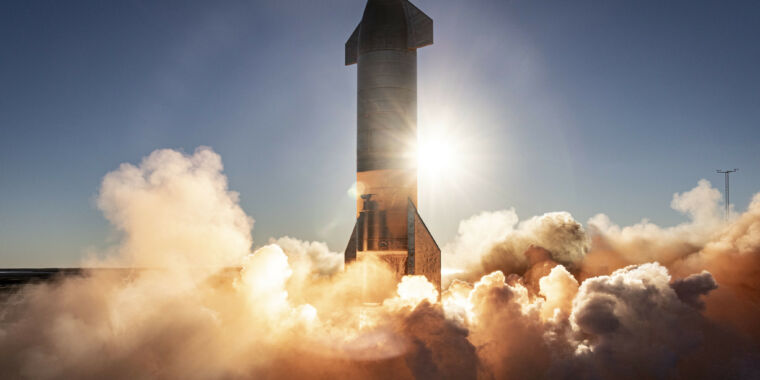
SpaceX
To build a completely reusable launch system for its interplanetary spacecraft, SpaceX had to solve a myriad of technical challenges, such as slowing the massive spacecraft as it returned to Earth’s atmosphere at near-orbit speeds.
But perhaps the biggest challenge – as is always the case with rockets – is somewhat banal: its mass. The goal of the missile is to build the lightest possible vehicle with the greatest possible performance. In theory, it sounds simple. In practice, however, containing volatile liquids at high pressures is not easy. And with a completely reusable launch system, SpaceX has the added challenge of building vehicles that can withstand the rigors of launch, operate in a vacuum, then screech back through the atmosphere to land again at sea level pressures.
The need to build light, robust and adaptive vehicles sometimes leads to interesting design options. At the end of 2020, SpaceX founder Elon Musk took to his favorite social network, Twitter, to share one of them with his followers. „We will try to capture the Super Heavy Booster with the arm of the launch tower, using the mesh fins to withstand the load.“ He said. The Super Heavy missile, which will likely have about 28 Raptor engines, will launch the Starship into Earth orbit.
This appears at first glance crazy. How do you catch a missile falling into the launch tower? And why would you risk the valuable launch infrastructure by attempting to land a massive missile directly above it?
One answer is mass. The company’s Falcon 9 first stage uses four large carbon-fiber and aluminum landing gear to stabilize the vehicle as it descends. Although it is made of this light material, the combined mass of the four landing legs is still around 2 metric tons. The legs of the much larger heavy booster were likely many times larger, perhaps in the range of 5 to 10 mt.
Who needs two legs?
It will also be more efficient. If SpaceX could design a launch tower arm, or a pair of booms, to capture the Super Heavy booster, it might quickly transport it to the launch pad. Such a missile could then – and this would require years of improvement and experimentation – be quickly checked, refueled, and launched again. Maybe even within an hour, Musk said.
It is unclear if this is possible. In theory, however, the Super Heavy booster could drop under the power of a subset of its 28 engines, and very close to flight, and the launch turret arms could extend to grab the booster. This sounds like a rather insane maneuver, but a few years ago, it was already like to send an unmanned autonomous ship to the Atlantic to catch the falling missiles.
It remains to be seen if all of this works. SpaceX has tried many things in the past regarding rockets only to ignore these ideas. This is one of the keys to Musk’s success and leadership style. It asks its personnel to do near impossible things – like building a completely reusable orbital launch system. Hence, it gives them freedom to experiment and sometimes to fail.
This idea seems crazy enough to work.

„Total Social Media Ninja. Introvertiert. Schöpfer. TV-Fan. Preisgekrönter Unternehmer. Web-Nerd. Zertifizierter Leser.“


